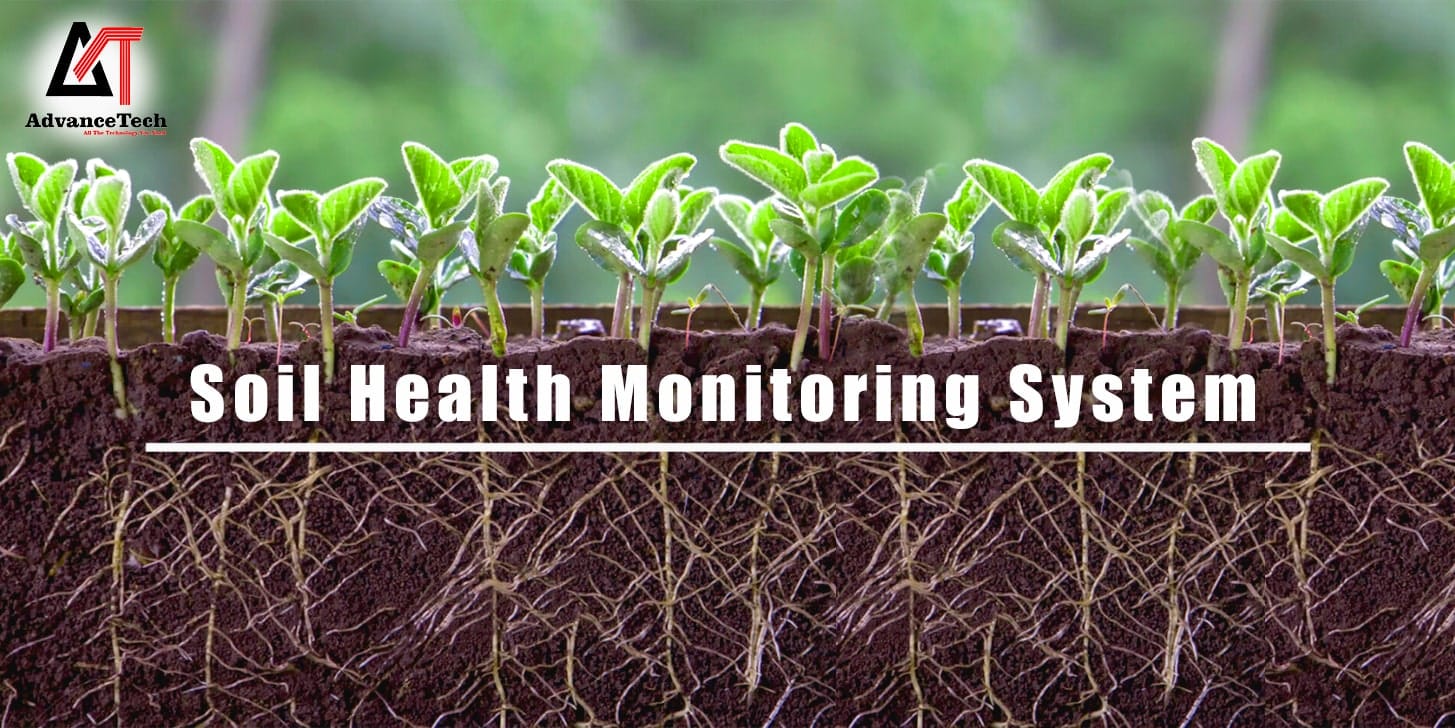Soil Health Monitoring System: AdvanceTech has the Experience and Technology for the enhancement role of IoT / AI in the field of Agriculture, Crop Yield, Weather monitoring, and various soil parameters. Some of the main parameters of the soil that we measure are Soil pH, Soil conductivity, soil moisture, soil temperature, soil NPK, etc. Our Solution is to measure these parameters by dipping the sensor in soil and transmitting the data over the cloud on the user’s mobile app, cloud dashboard, SMS alert, etc. We have successfully developed multiple projects in association with agriculture universities like Punjab Agriculture University, Hissar Agricultural University, Sher-e-Kashmir University of Agricultural Sciences and Technology, Indian Council of Agricultural Research, etc. We are reputed OEM and Design organizations working in multiple divisions of agricultural research.
In India, agriculture takes a very important place as well as it provide employment on a large scale. But our agriculture sector facing a lot of challenges. One of the biggest problems is checking all the required data because first have to collect the sample, send it to the lab, waiting for a long time. That is really time-consuming process. That is why we require an agriculture automation device that can observe the soil nutrients on a real-time basis so that the device is a Soil Health Monitoring System that follows modern technology and user user-friendly.
Comprehending Soil Health Monitoring
A key element affecting crop development, yield, and the sustainability of agriculture as a whole is soil health. In the past, evaluating the health of the soil has required a lot of work and time, frequently depending on arbitrary observations or recurrent soil collection and analysis. But as IoT technology has developed, soil health monitoring has grown more accurate, cost-effective, and efficient.
An Internet of Things (IoT) soil health monitoring system is made up of a number of networked sensors, data-gathering tools, and analytics platforms that work together to continually monitor and evaluate important soil characteristics in real-time. These variables usually include soil compaction, pH levels, temperature, moisture content, and nutrient concentrations. Farmers can better understand the state of their soil by gathering and evaluating this data, which helps them make informed decisions about when and how to apply fertilizer, watering regimens, and other agronomic techniques.
IoT Soil Health Monitoring System Components:
Sensor Nodes
These are placed strategically throughout the farm in the ground. Multiple sensors are installed on each sensor node to measure various soil properties. To precisely evaluate soil conditions, these sensors may make use of a variety of technologies, including resistive, optical, and capacitance sensing.
Communication Infrastructure
Wireless communication protocols like Wi-Fi, Lora WAN, ZigBee, or cellular networks are used by sensor nodes to connect to a central gateway or base station. A number of variables, including deployment environment, data transmission rate, power consumption, and range, influence the choice of communication technology.
Data Gathering and Storage
The data is collected by the central gateway from various sensor nodes and sent to an on-site or cloud-based data storage system. In this location, the information is handled, examined, and safely kept for later use.
IoT Soil Health Monitoring System Benefits:
Good Agriculture
Because of this soil health monitoring system, farmers can apply good agriculture techniques, which offer current time information into soil conditions and one of the biggest benefits is a quick response provider.
Early Problem checker
They detect before, about the problems and inform the farmers so that they can solve problems which is possible as nutrient shortages, soil erosion, or pest infestations. Prompt detection facilitates timely intervention and averting crop losses
Remote Management and Observation
As the name implies Remote management and observation so the farmers can use IoT to remotely monitor soil health parameters from any of the locations with the internet.
Obstacles & Things to Think About:
IoT soil health monitoring has the potential to completely transform agriculture, but before it can be widely used and effectively implemented, a number of issues need to be resolved:
Cost
For small-scale farmers, the initial outlay for implementing IoT soil health monitoring systems, which include sensor nodes, connection infrastructure, and data analytics platforms, can be substantial. No matter how big or small their farm is, efforts must be made to lower the cost of these technologies and increase their accessibility for all farmers.
Data Security and Privacy
Protecting the security and privacy of the data gathered by soil health monitoring sensors is crucial, just like it is for any Internet of Things system. Farmers need to feel secure in the knowledge that their private agricultural information is shielded from misuse, alteration, and illegal access.
Training
Learning is a necessary part of every field which develops knowledge and the ability to use new technology.so farmers must adopt knowledge in technology use and in decision-making using IoT.
Reliability
The result which is generated is always reliable as well as helpful which is always understandable by the farmers.
Prospective Courses:
There are a number of occasions for improving soil health observation in agriculture with IoT technology. These include the following:
Sensor
Farmers and customers both get advantages because of sensors by convincement in agricultural supplies.
open data options: farmers and agribusinesses can together share information by using open data options and by this, we can exchange our agricultural data also helping to find errors in global food security
Conclusion
Soil Health monitoring systems with IoT help a lot in the development of Farming automation, as this provides real-time results which is helpful for the farmers because they can observe all the things quickly because of the soil monitoring system. With the help of this system, agriculture seems brighter than ever.






